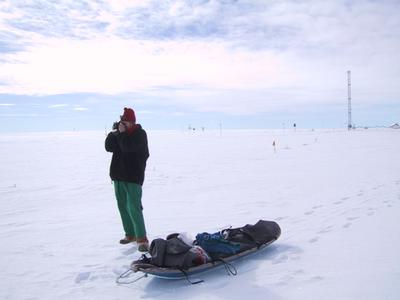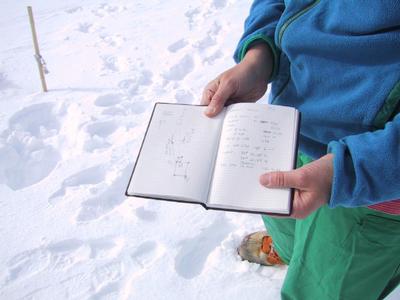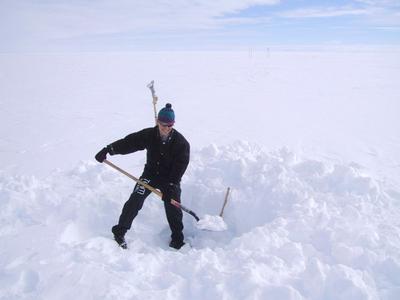
|
18 July, 2001How does one study the bedrock of a place under 3000 meters of ice? - Trina Dahl-Jensen Today, between other projects, I spent some time talking with scientist Trina Dehl-Jensen. She works for the Geological Survey of Denmark and Greenland. Her office is in Copenhagen. Trina is one of the scientists who is only here at Summit for a few days. She is here just to download data from her instrument and then she is moving on. I met her in Kangerlussaug on my first night in Greenland, where we were roommates in the dorm. I was immediately impressed by her friendly and approachable style and her ability to speak English. Trina explained that she was a seismologist, a person that studies earthquakes to learn about the earth. Trina’s long term project involves studying earthquake signals at 20 sites throughout Greenland. Summit is one of the 6 sites that are buried in the ice, the rest are on the coast of Greenland. Greenland is mostly ice, with only a small ring of exposed bedrock close to the shore. This fact makes it difficult to know what the geology of the island really looks like unless one uses remote sensing techniques. Specifically, Trina’s project measures earthquake signals. From the data that she gathers from her 20 sites, Trina is able to piece together the velocity of the P type waves as they travel through the earth’s rock. From this information she can hypothesize the thickness and type of rock under the ice. When I asked her how this information might be useful she told me that the Greenlanders were using the information to assess potential mineral locations. Amazingly, she said they were looking for rocks that might contain diamonds. Now, I know there’s something sparkly in Greenland that isn’t snow! Since, I had never met a Geophysicist before, I asked Trina to tell me a little more about herself and how she became interested in Geophysics. Trina told me that she comes from a family of science oriented people. Her father is Physicist and her sister also choose to pursue Glaciology at the age of 15. Trina is lucky her sister is also a field scientist because now they have the opportunity to work together in these beautiful and remote places. Trina studied for her PhD in Uppsala Sweden. Like most of the scientists here, Trina speaks several languages fluently, hers include Swedish and German. She completed her PhD in 1989 and went on for a post doctoral position at Cambridge University. Trina has had a life of science and travel. She seems to thoroughly enjoy her work. It has been a pleasure spending time with this courageous woman. To learn more about Trina’s work you may check her web site at Geological survey of Denmark and Greenland or email her at tdj@geus.dk
Contact the TEA in the field at . If you cannot connect through your browser, copy the TEA's e-mail address in the "To:" line of your favorite e-mail package. |








